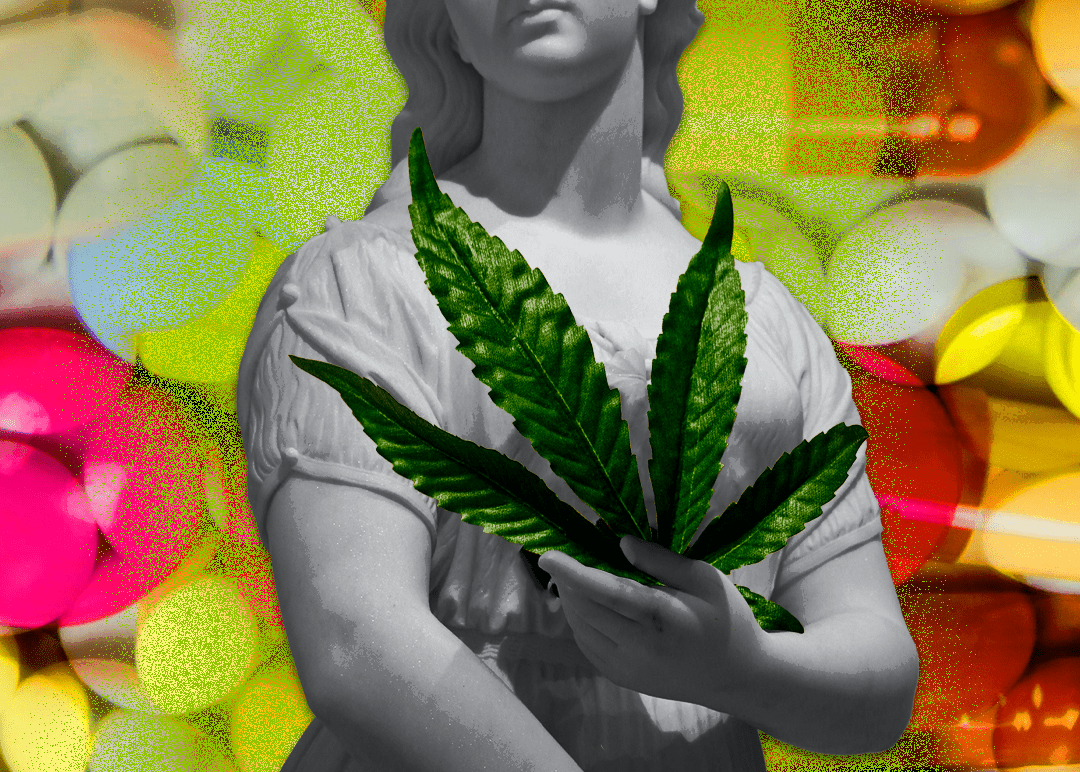“It was bizarre behavior all over the streets where they run around naked,” Harris said.
The owner of a popular smoke shop on Veterans Memorial Highway in Ronkonkoma, New York, known as Abar, commented on his distribution of synthetic cannabis.
The 2018 Farm Bill reversed the decades-long ban on hemp, or cannabis containing less than 0.3% Delta-9 THC , and allowed for the sale and distribution of hemp derivatives.
The lack of uniformity in the synthetic cannabinoids, like Delta-8 and K2, adds to the unpredictability and the risk.
Synthetic cannabinoids are intended to produce the same effects as Delta-9 THC, their federally illegal cousin.
Overdosing can cause severe consequences and death can also occur with the lacing of filler products such as synthetic opioids.
New York state’s Compassionate Care Act of 2016 called for the use of medical marijuana for the treatment of “debilitating or life-threatening diseases, or conditions that cause chronic pain” to combat Long Island’s opioid epidemic.
Benzodiazepines, or “benzos,” are a class of psychoactive drugs used to treat depression of the nerves within the brain and anxiety.
Benzos can work in a matter of minutes, and at the time were considered a “medical miracle.” Benzos are typically prescribed for longer than their recommended usage which may explain elevated tolerance levels and addiction.
Cannabis is the best fit for PTSD relief among the three as there are no significant links to addiction, very little to no unwanted side effects, and is already endorsed by many across the country as a remedy.
People who do smoke cannabis can show signs of damage and precancerous changes in their lungs, but typically it is scarring similar to what one would get from pneumonia.
Then again, if you don’t want to deal with any of the hassles of smoking, there are always edibles and tinctures but the effects are not the same.
The Mayo Clinic defines PTSD as a mental health condition that is triggered by a terrifying event — either experiencing it or witnessing it.
“Anything outside of my routine would put me in a tailspin,” Grey said.
When asked about “as needed” treatments, also known as pro re nata , Grey commented on one of her clients who used medical cannabis almost daily.
As Grey stated, “There’s a baseline level in order for people to operate through the day” and treatment with cannabis provided that for her client.
Cannabis changes the brain’s natural reward system, scrambling neural signals — which may be why users experience “the munchies.” THC may also increase the “neural noise” or random neural activity in the brain.
Five of the 14 subjects with heavy cannabis use also reported a history of alcohol abuse, which may have contributed much of the brain abnormalities typically linked to addiction.
Some suggest that the brain is fully matured by the minimum age of 20, others believe the mid-20s and possibly until the 30s.
But it should be understood these ages are marked as developmental milestones that are very delicate and absolutely necessary for proper adult development.
These concerns provide necessary inquiry into the health effects of cannabis and its use as an alternative to benzos and opioids.
There may not be a clear solution, but cannabis could be an alternative to combat addiction, mental illness, pain, and PTSD, and could be a substitute for controlled substances.
Based in Queens but originally from Texas , she can usually be found on the 7 train, either reading a young adult novel or watching TikToks.
The Observer reserves the right to remove any comments that contain any of the following: threats or harassment, hateful language and/or slurs, spam , and incoherent phrasing.
